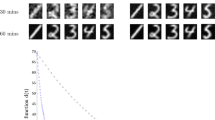Abstract
In this paper a new class of sampling design, with a markovian behaviour, which use both auxiliary and label information for estimating the total of a finite population, is proposed. The performance of these schemes is numerically compared with Midzuno, Rejective and PPS systematic sampling schemes for populations exhibiting exponential trend.
Similar content being viewed by others
References
Hajek, J. (1981): Sampling from a finite population, Marcel Dekker, Inc., New York.
Midzuno, H. (1951): On the sampling system with probabilities proportionate to sum of sizes, Ann. Inst. Stat. Math., 2, 99–108.
Murthy, M.N. (1967): Sampling theory and Methods, Statistical Publishing Society, Calcutta.
Suresh Chandra, K. and Sampath, S. (1989): Markov Sampling for finite population, Technical Report No. 11/88-89, Department of Statistics, University of Madras, Madras.
Author information
Authors and Affiliations
Rights and permissions
About this article
Cite this article
Chandra, K.S., Sampath, S. Markov sampling with auxiliary information. Statistical Papers 33, 83–91 (1992). https://doi.org/10.1007/BF02925315
Received:
Revised:
Issue Date:
DOI: https://doi.org/10.1007/BF02925315




